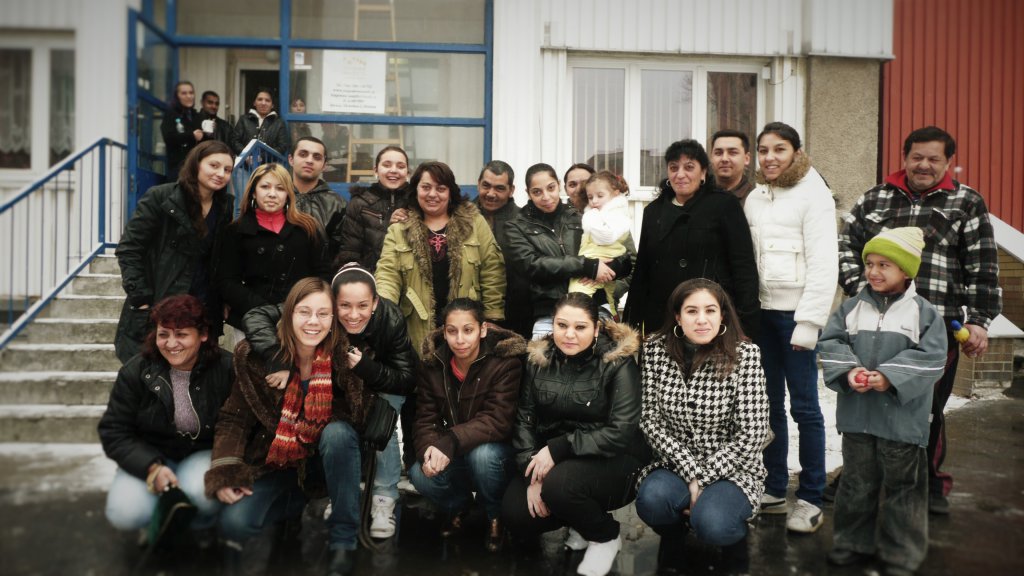Nine years after DH: Time for Slovakia to break the silence about segregation
09 November 2016
By Marek Balaz
On this day, back in 2007 the ERRC’s long struggle against school segregation was vindicated in an historic judgment by the European Court of Human Rights. When the ERRC first brought D.H. and others vs. the Czech Republic before the court, Roma children in the Czech Republic were 27 times more likely than non-Roma children to be placed in "special schools" for the mentally disabled. In 2007, the European Court of Human Rights ruled this pattern of segregation to be unlawful and discriminatory. Although the case was labeled Europe’s own Brown vs. the Board of Education, nine years after the judgment, the struggle to end school segregation of Romani children continues.

Despite the D.H. ruling and subsequent European Court judgments against school segregation, discrimination against Roma in schools remains rife across the continent, as does official denial that segregation actually exists. Neighboring Slovakia remains notoriously reluctant to publicly acknowledge discriminatory practices affecting Romani students.
As a result, today, many Roma children in Slovakia remain substantially deprived of their right to education by being segregated either within special or mainstream schools. According to data in the fourth report on Slovakia from the European Committee Against Racism & Intolerance, nearly 60 percent of all students in special education were Romani. The chance of being assigned to a special school was 28 times higher for Romani students than for their non-Roma peers.1
In order to even begin to address this, Slovakia must recognize and reform the flaws of the current system that lead to this overrepresentation of Roma students in special education. The Slovak school act 245/2008 must provide a clear definition of segregation and provide tools to tackle segregation and prevent it from occurring.
Last year’s amendment of the school act, as outlined in a joint ERRC and Center for Civil and Human Rights submission to the UN Committee on the Rights of the Child, delivered legislative changes which are far from being satisfactory.
Of course, solving the issue of segregation in Slovakia is going to require a lot of political will, time and resources. But without officially and publicly acknowledging the problem, we are missing the first necessary step in solving it. Without breaking the silence about segregation, the 9th D.H. anniversary will be marked as another missed year for an educational policy reform in Slovakia.
What we can learn from the D.H. and others vs. the Czech Republic aftermath gives hope that change can happen. The Czech education reform, though nine years after the ruling, finally has set out on the path towards inclusive education. To be more specific, the reform introduces compulsory one-year preschool education, support for students with special education needs and abolishes the special school’s curricula. These measures aim to provide a brighter educational outlook for Roma students in the Czech Republic.
At this stage, it would be premature to state whether or not these changes will prove effective. However, we can clearly see that the Czech government officials have managed to break the segregation taboo and entered into the policy stage where issues are being discussed and tackled rather than being denied or ignored.
Across the border, Slovak state officials have almost mastered the art of ignorance and denial regarding school segregation of Roma. In 2014, Slovakia refused the recommendations regarding the discrimination of Roma students under the UN Universal Periodical Evaluation based on a claim that legislative equal treatment is already provided. This is despite segregation of Roma students having been already confirmed in the groundbreaking Šarišské Michaľany case four years ago. None of the evidence in published reports nor in court judgments seems to be enough to prick the moral consciousness of high-level state officials and induce them to acknowledge the flaws in the system that is discriminating against Romani students.
The Slovakian government are burying their head under the sand when it comes to school segregation of Roma, even to the point of international condemnation. In 2015 the European Commission triggered infringement procedures against Slovakia over possible discriminatory practices affecting Roma within education. The Commission is scrutinizing overrepresentation of Roma students in special education and also segregation within mainstream education. The government’s response to the infringement was to use the highly criticized “high incest amongst Roma argument”, based on a study with minimal external validity, as an argument for their systematic overrepresentation in special education. The European Commission’s response refuted such an argument and expects a more sound response by the government by the end 2016.
To be sure, making the first step is often the hardest one. It took the Czech Republic almost a decade to introduce a major educational policy reform. But through its continuing policy of neglect, Slovakia is reaching a major crossroads. Either it will continue down the way of denial - leading only to persistent discrimination of Roma; or the government will finally officially acknowledge the practice as discrimination. The mounting evidence of segregation from research bodies and the judiciary, as well as swelling international pressure on Slovakia hints that the State’s silence cannot last much longer.
1. Human Rights of the Roma, Council of Europe, p. 128. citing ECRI Fourth report on Slovakia, p. 19.




